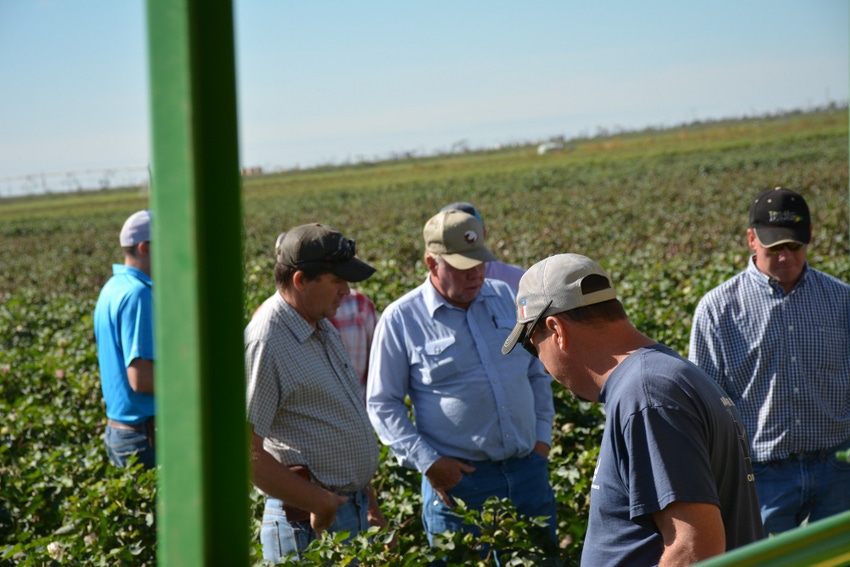
Nematodes got a lot of attention from Deltapine cottonseed breeders, district managers, and technical reps at a recent field day near Seminole, Texas.
The location was ideal. Deltapine plants variety trials and test plots on the Mark and Blaine Nichols’ Gaines County farm where “We have nematodes on every acre,” says Blaine.
In the past, the Nichols used Temik, Vydate, and a peanut rotation to help manage root knot nematodes. They no longer grow peanuts, and both Temik and Vydate have been taken off the market, leaving them dependent on varieties resistant or tolerant to nematodes.
Deltapine already offers lines with nematode tolerance, but breeders are looking for others. “We don’t have the Bollgard II XtendFlex technology in the current resistant varieties,” says Deltapine’s Eric Best.
The herbicide technology that pairs with the dicamba-tolerant cotton awaits approval from the Environmental Protection Agency, says John Everitt with Deltapine. “We’re waiting, and the EPA still says late summer or early fall, so we expect approval soon. We expect to have it for next season.”
Nematode-resistant varieties with Xtend technology should be available by 2018. “They are coming through our breeding program,” says Deltapine Cotton Breeder Darren Jones. “We identified the genetic marker for root knot nematode resistance in our breeding lines, so it was already in place in promising lines. We should have a lot more material coming through the pipeline.”
He says the resistant lines had already passed several steps to evaluate yield and quality. “We make certain we have performance, with and without nematode pressure. We look for yield parity.”
PERFORMACE IMPORTANT
Deltapine district sales manager Larry Martin says several nematode-resistant lines are coming. “These have advanced through variety trials for yield and fiber quality traits, so growers won’t give up performance. These resistant lines should provide the same level of nematode protection as rotation with peanuts.”
He expects some nematode suppression will carry over after planting resistant lines for several years. “We can grow these resistant varieties for three years, then rotate to a susceptible variety for one year. We would see problems with a second straight year in a susceptible variety.”
Everitt says farmers with known nematode populations also need to manage weeds. “Pigweed, Russian thistle, and others are hosts for nematodes,” he says.
For the latest on southwest agriculture, please check out Southwest Farm Press Daily and receive the latest news right to your inbox.
He also cautions producers to practice product stewardship with the new technology. “It’s crucial to manage spray drift, and nozzle selection will be critical. We haven’t decided on a specific nozzle yet, but we plan to offer cost-share programs with the recommended nozzles.”
That program likely will be tied into other rebate offerings, including Roundup Ready Plus tied back to use of residual herbicides. “We will keep cost of these products in the ballpark with generics,” Martin says. “Price will be competitive.”
He and others emphasize that a systems approach will be essential. “If not used correctly, we will see herbicide resistance in two or three years, and we’ll be back in the same position as with glyphosate-resistant weeds). Use residual herbicides.”
About the Author(s)
You May Also Like






